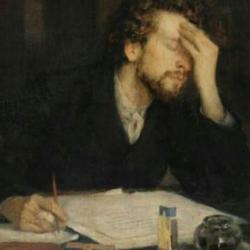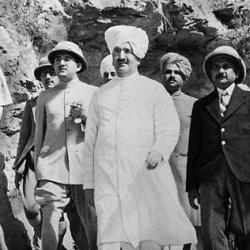According to Ferdinand Kittel’s 1894 Kannada-English Dictionary, the word “samskara” means “forming well or thoroughly, making perfect . . . forming in the mind, conception, idea, notion . . . preparation, making ready, preparation of food . . . making sacred, hallowing, consecration . . . making pure, purification, purity . . . a sanctifying or purificatory rite or essential ceremony . . . any rite of ceremony . . . funeral obsequies.”
Samskara the novel (1965), written by U.R. Ananthamurthy and reissued in a NYRB translation by A.N. Ramanujan in 2016, is about samskara in several of these senses. The protagonist, Praneshacharya, is a brahmin living in a brahmin village, known as “the Acharya” or learned man and the “Crest-Jewel of Vedic Philosophy,” a man so devout that he deliberately marries an invalid so that he can turn his marriage into a great act of renunciation and self-sacrifice that, as a lifelong samskara, perfects, purifies, and sanctifies him for a blessed future. In the novel, he embarks of an unexpected, profane path of consecration.
Praneshacharya’s village, and the Acharya himself, are thrown into a crisis by the death of his neighbor, Naranappa. Naranappa had abandoned his brahmin wife to marry the sensuous low-caste Chandri, and had spent his life flouting brahmin taboos—eating meat, breaking fasts, drinking alcohol, joining his Muslim friends to catch sacred fish from the temple. Only a brahmin can perform samskara rites of death for a brahmin, but it’s not clear that Naranappa retains his brahmin status. On the other hand, if he is impure, then the brahmins have to avoid his body. Besides, he dies with myriad unresolved conflicts with other residents, and they aren’t inclined to respect him. No one in the village can eat until his body is burned, but no one is ready to do the honors. Chandri complicates things when she offers jewels to anyone who will perform the rites, adding greed to the other petty vices that infect the brahmin community.
Everyone naturally looks to Praneshacharya for an answer. He consults the holy books but can find no guidance. He spends a night fasting in the shrine of Maruti the monkey god but does not receive illumination. Meanwhile, Naranappa’s body rots and stinks, vultures ominously gather on the roofs of the houses, rats are dying. Eventually others die, including Praneshacharya’s wife, and it dawns on the village that Naranappa brought bubonic plague back to the village, which they take as a sign of divine disfavor.
After an intense night of prayer, the exhausted Praneshacharya has a chance encounter with Chandri in the forest near the village. She kisses his feet, and, touched for the first time by a woman other than his wife, whose body is “a dried-up wasted pea-pod,” Praneshacharya is filled with a desire he has never known. The two have sex in the forest.
The morning after, Praneshacharya realizes that he has disqualified himself from advising the village and passing judgment on Naranappa’s case. As translator Ramanujan puts it in an illuminating Afterword, sex serves as a profane samskara, a “rite of initiation” into a new state and a new world. Through this inverted ritual, he begins a process of self-transformation. He flees the village in shame, going wherever his feet take him. He no longer knows who he is, and cannot determine whether he is culpable for his act.
Along the way, he meets up with Putta, a cheerful, loquacious man as comfortable in the profane modern India as Praneshacharya once was in his quasi-medieval sacred world. The novel moves, as Ramanujan points out, like a rite of passage: First separation from the old, then movement through an amoral liminal space toward reincorporation. Putta takes Praneshacharya to a celebration in a nearby town, where the brahmin drinks coffee in a common cafe, lustfully watches dancers, witnesses a vicious cock fight, is introduced to a prostitute. At the inconclusive end of the novel, Praneshacharya begins a return to his village, a new man who is, in the final words of the novel, “anxious, expectant.” Perhaps he can return to his former role in the village, but he will do so as a different man, newly formed by experience of the world.
When Samskara was first published in 1965, many readers attacked it for its depiction of Pharisaical brahmins, but Ananthamurthy’s opposition to brahmin religion goes deeper. He doesn’t object only to the abuse of ancient religion but to the religion itself. In an interview appended to the New York Review edition, the author compares himself to Luther and says, “Praneshacharya has a whole set of absurd questions before he meets [Chandri] and a whole set of absurd questions after he meets her. The only thing that is pure in the novel is the meeting. His sexual self is aroused and there is no question of right or wrong, only pure joy. . . . It is beyond right and wrong.” Religion is absurd; sex is pure. In a more traditionally Hindu vein, he adds, the novel is “about willfulness and will-lessness.” Willfulness inevitably leads to bad faith and hypocrisy: “When there is tiredness in what you do, even being good, it is not genuine.” Chandri represents will-lessness, a life without “tiredness” and without the bad faith of willfulness.
Among many other things, Ananthamurthy’s novel captures the religious, ritual dimension of sexual freedom in the modern age. Sex isn’t just hedonistic pleasure; it certainly isn’t a seal of lifelong companionship; it’s not for procreation. It’s a rite of passage, an entry into a chaotic state of communitas that dismantles the old identity and molds a new one.














